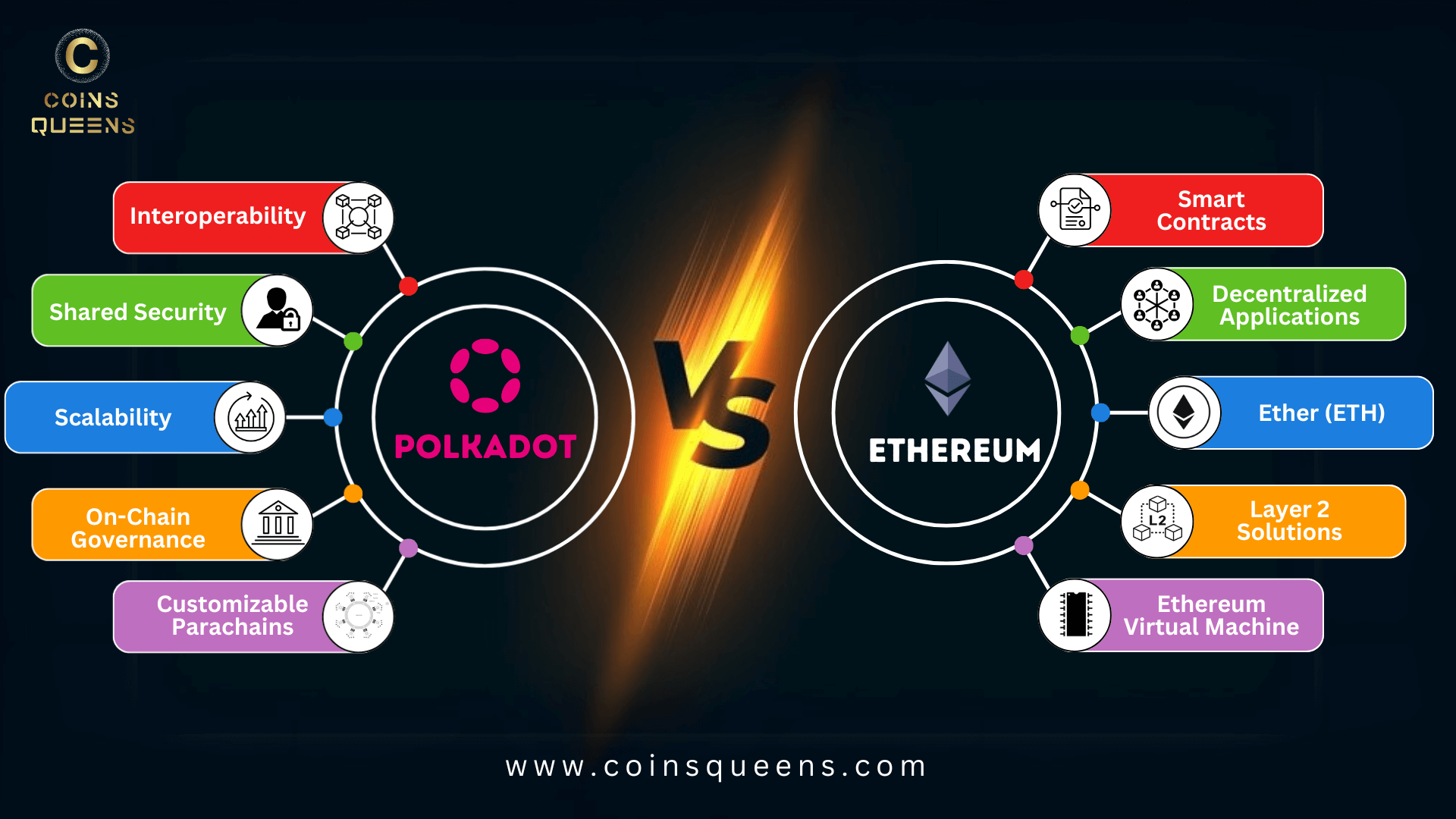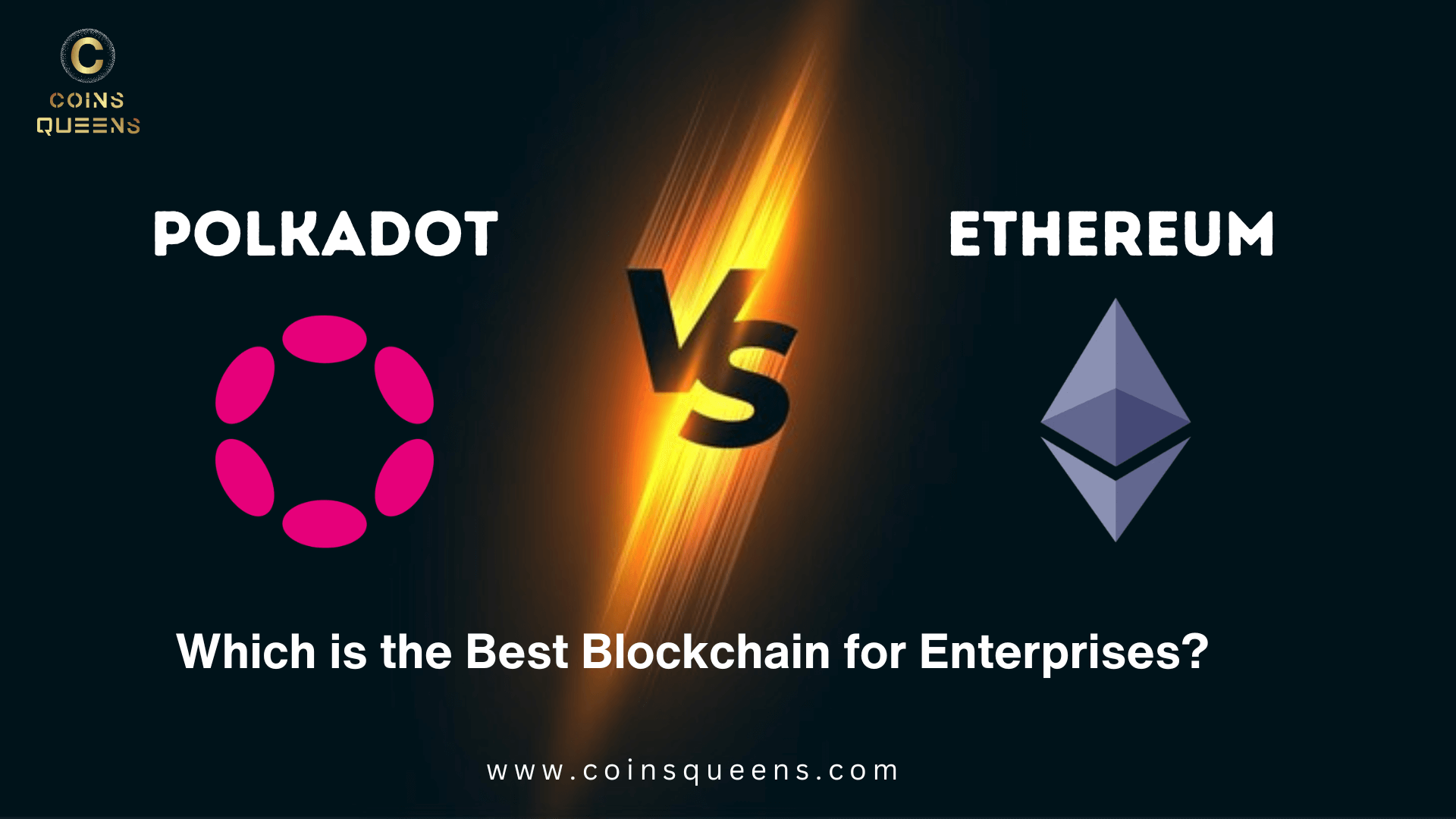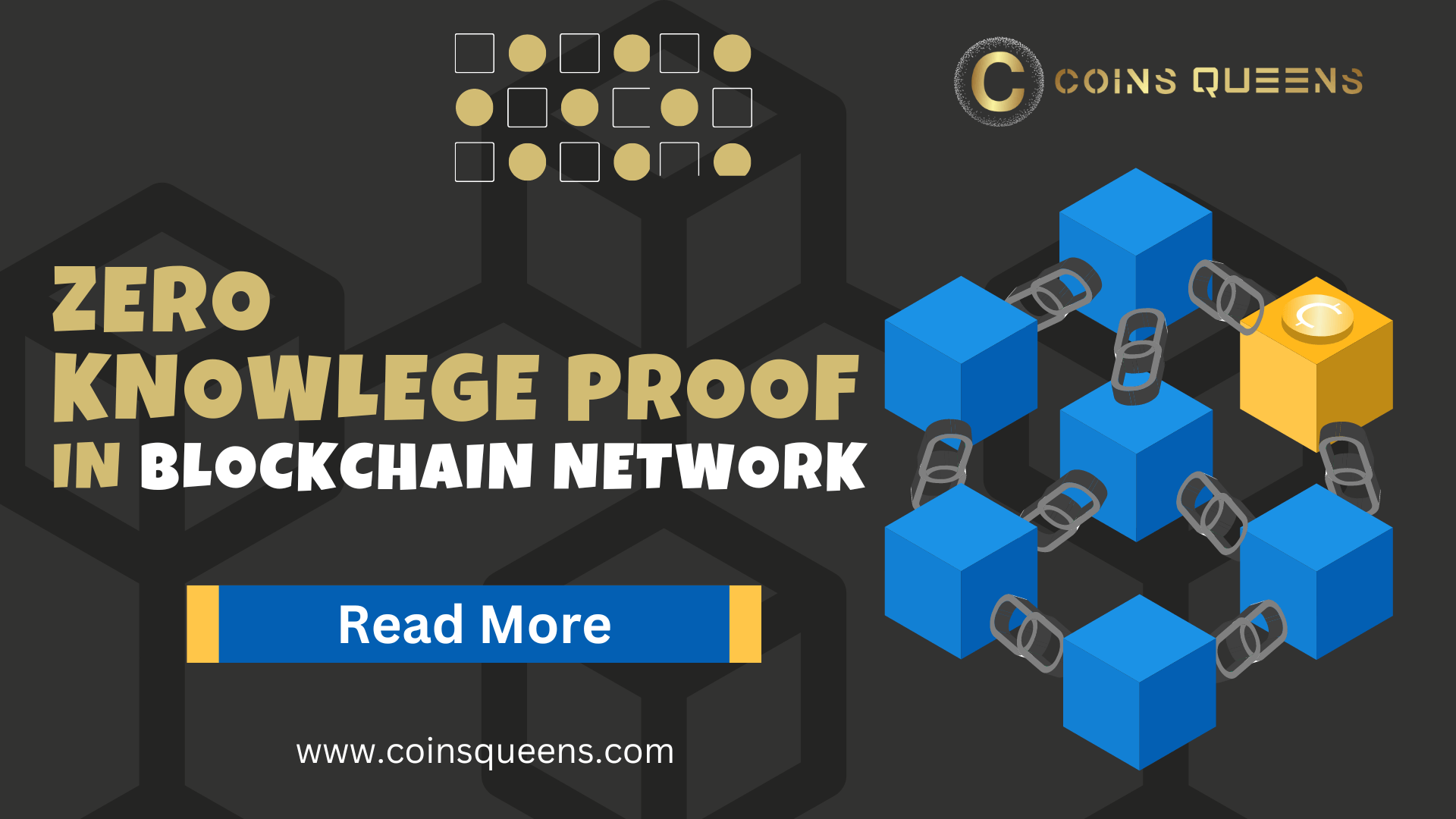Developers and blockchain enthusiasts are confused about choosing a specific blockchain network like Ethereum or Polkadot for their business development. Blockchain was introduced to ensure high-end security in organizational networks. It was developed to perform data protection, data integrity, and data privacy. Several blockchain networks have been developed in recent years having their scalability and potential. This blog provides a comparative study of the Ethereum and Polkadot blockchains. It also evaluates the utilization of the best blockchains that are suited for enterprises and businesses. This blog is drafted to analyze the differences in both blockchains’ features and network capabilities.
What is Ethereum?
Ethereum is a decentralized blockchain network that helps to develop smart contracts and a variety of decentralized applications. An Ethereum network comprises nodes with each node having a copy of whole transactions providing data protection. The Ethereum Blockchain works based on an Ethereum virtual machine. This virtual machine acts as a runtime environment to execute the code to carry out transactions within the blockchain. The decentralized system allows the usage of Ether, a native cryptocurrency of the Ethereum platform.
What is Polkadot?
Polkadot blockchain Development is considered the new generation of blockchain networks since it offers interconnection with several blockchain networks through parachains. The para chains act as a link-building source between blockchain networks thereby facilitating communication between them. Polkadot in blockchain development makes use of relay chains that stand to be a central mediator of facilitating communication for the entire network. Despite this central networking, the Polkadot blockchain also involves para chains to transfer data between different blockchain systems enhancing interoperability. Polkadot blockchain development can be considered the greatest solution for interoperability issues that are faced by common blockchains.
Layer 2 and Layer 3 of Ethereum vs Polkadot
The overlaying of the additional layers in the blockchain network offers additional security and better protection of the data. They are introduced to improve the scalability of the blockchain networks and also allow several decentralized applications to be developed securely.
Architecture:
The Ethereum blockchain development involves a single layer with layer 2 solutions. The Ethereum blockchain which is comprised of layer 2 makes use of a consensus mechanism. In the consensus mechanism, the distributed network agrees to the current state of the blockchain. In layer 3, the execution of the smart contracts and Dapps takes place. In the case of the Polkadot blockchain, layer 2 is comprised of optimistic roll-ups that assume all transactions to be valid by default. It also helps in improving the scalability and efficiency in the execution of the transactions.
Scalability:
To improve the scalability, the Ethereum networks use techniques like roll-ups and state channels in layer 2. Using rolls up, the load of the transactions can be reduced in the main chain. State channels allow the transactions to be carried out in the off-chain with the result attained in the main blockchain. Layer 3 of Ethereum is built on layer 2 which is cost-efficient and has less gas fees. In the case of the Polkadot blockchain, parachains are used for multiple processing in layer 2. In layer 3, enhanced interoperability and optimized performance are done.
Interoperability:
While considering the interoperability feature, the Ethereum blockchain is confined to limited interoperability. The layer 2 inclusion in the Ethereum blockchain faces some challenges like seamless transaction of assets. Also, it faces network congestion. Layer 3 solutions also face the same challenges like handling complex transactions. In Polkadot, the level of interoperability will be higher because of the cross-platform compatibility through parachains. Relay chain forms the core of Polkadot and offers shared security and cross-chain interoperability among different blockchains. Bridges are used to build connectivity of Polkadot with other blockchains like Ethereum or Bitcoin. Thus external connectivity is possible through Bridges. The layer 3 solutions are designed to offer operational efficiency across multiple Parachains.
Use-cases of layer 2 and layer 3 of Polkadot and Ethereum
The Ethereum blockchain development finds its applications in smart contracts and app development. Polkadot blockchain finds application in offering inter-networking between the blockchain networks. The major use-case of this blockchain is dealt with interoperability.
There are specific industries that get transited from using layer 2 to layer 3. They are gaming, defi, and social media. Layer 2 provides faster transactions over the existing blockchain. Layer 3 is built on top of Layer 2 to offer customized security solutions.
Market Trends: Ethereum Vs Polkadot
Market trends refer to current price movements and technological upgrades in both the blockchain networks. Along with this, the developing cost of each of the blockchains will be also discussed.
The cost of developing the Ethereum blockchain varies based on the complexity of the applications. On the other hand, the cost of developing the Polkadot blockchain stands higher due to its requirements like hardware wallet and RPC providers. While considering the ecosystem growth of the Polkadot, this specific blockchain network is designed to offer interoperability with several other blockchain networks through a parachain facility. The blend of innovation and development is continuous in the Polakdot blockchain when compared to Ethereum. Certain studies have revealed that the Polkadot blockchain is suitable for several developers to build decentralized applications effectively.
When compared to Ethereum, Polkadot is often seen with rapid innovations and involvement in new projects. Polkadot has ventured a new initiative called “Snow bridge” which helps connect Polkadot with Ethereum. Thus the core idea of several developers is centralized with the Polkadot blockchain.
Gas fees: Ethereum Vs Polkadot
Ethereum
Ethereum uses a system where the user needs to pay for each transaction or smart contract to be executed in the blockchain. There is a fluctuation in these fees due to high network congestion.
Polkadot
Polkadot uses a different approach for depicting transaction fees. They use a weight mechanism to estimate the weight of the transactions beforehand. By doing so, the cost of the transaction can be predicted. Thus the lowering of the transaction fees is also possible.

Which is the Best Blockchain for Business?
To meet business needs, an entrepreneur should seek the strengths and features of both the blockchain networks. If a business owned by a single entrepreneur looks for a robust ecosystem with low cost, then Polkadot is highly preferable. The businesses which are start-ups look for innovative developments and opportunities through cost-efficient means. For this purpose, the Polkadot blockchain stands out to be efficient.
Which is the Best Blockchain for Enterprises?
Enterprises are larger organizations with multiple ownership and a vast number of employees. Since Ethereum is highly recognized by market cap and offers improved scalability, it can support the business of large enterprises. Even though cost factors are high, the productivity and efficiency of Ethereum blockchains will be high. The trust and confidentiality ratio of utilizing the Ethereum blockchain will be also high.
Pros and Cons of Utilizing Ethereum Vs Polkadot Blockchain
Pros:
Ethereum
Ethereum is a highly established ecosystem that welcomes a large number of developers to introduce smart contracts and Dapps in the platform. It is highly recognized by developers to get started with it instead of beginning their journey with new platforms. Some upgrades and functional improvements are being carried out for the Ethereum network to reduce gas fees and network congestion. Being the second largest cryptocurrency by market cap, the overall engagement and popularity of Ethereum are high among the developers. As per the report by Investing dot com, Ethereum can be used safely and for its high scalability, effective energies, and developer usage.
Polkadot:
The interoperability nature offered by Polkadot reduces congestion problems faced in Ethereum. Since it works with parachain interoperability features, the scalability, and the networking will be efficient and attract a large number of investors. This particular network is adaptable to a diverse range of projects.
Cons:
Ethereum:
Even though Ethereum is developed with Layer 2 solutions, it faces tough competition with other blockchain platforms with similar features and functions. Hence, the market environment of this particular network is threatened. When any kind of decisions are made on the network, they are done off-chain thereby raising centralized concerns.
Polkadot:
In the initial stages of development, it faces some challenges. Polkadot being a new platform lacks trust among investors who expect returns immediately. It is a newer platform still facing new updates and developments. Therefore, it has less market recognition when compared to platforms like Ethereum.
Industrial Use-cases: Ethereum Vs Polkadot
The Ethereum and Polkadot blockchain development have found their applications in several industries to improve efficiency and productivity in their businesses.
Ethereum
Trading: Trading applications use the Ethereum blockchain to perform in a decentralized network.
NFT gaming: Games that use the NFT ecosystem use the Ethereum blockchain. Using NFT tokens, the players can hold ownership of the in-game assets.
Polkadot
Healthcare: For developing hospitals, the Polkadot blockchain is used to store the health records of the patients securely.
Real estate: Polkadot blockchain supports real estate trading.
Wrapping up:
The entire blog offers a comparative framework between Ethereum and the Polkadot blockchain. Choosing between Ethereum and Polkadot is entirely dependent on the entrepreneur’s choice after analyzing its scalability, growth, and efficiency. The application of Ethereum and Polkadot blockchains is found in gaming, trading, supply chain management, metaverse, healthcare, and real estate.
If you want your business operations to be decentralized and secured, CoinsQueens would be the right choice for you. Don’t hesitate to build high-end security for your business through our Blockchain Development Services. We have our projects aligned with both Polkadot and Ethereum as per our client’s business requirements. Our Polkadot services use para chains and bridges to offer parallel processing and efficient security. On the other hand, we are also leading providers of Ethereum blockchain development services. The rapid prototyping feature included in our Ethereum development services assures quality testing of smart contracts and Dapps.














